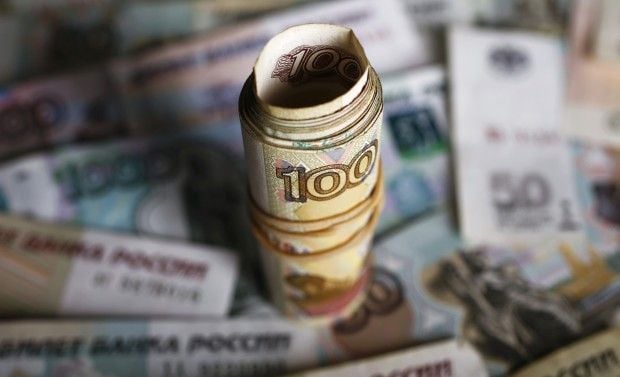
The issue, the first in three years, was heavily subscribed by local investors looking to offload dollars bought as the rouble weakened over the past two years, Reuters said.
The funds raised will help the government, battered by a slowdown and the sanctions, to fill gaps in the budget.
But the eurobond was also designed to show that, despite sanctions and the standoff with the West over Ukraine, Russia could still tap into Western debt markets. On that count its success was unclear.
The book was still open on Tuesday evening with investors continuing to sign on, according to a financial source. Demand in the middle of the day on Tuesday stood at $6.3 billion, according to sources in the financial market.
Several market sources told Reuters there were few international players after warnings from Brussels and Washington that they risked running foul of sanctions imposed following Moscow's annexation of Crimea from Ukraine in 2014.
"I don't think it really shows very much in terms of Russia's ability to get around sanctions," said Timothy Ash, head of emerging markets strategy at Nomura.
"Rather the opposite, it shows still how logjammed Russia is and that it is still really dependent on local financing sources," he said.
Russia last issued a eurobond in 2013, a hiatus due in large part to the sanctions. They do not explicitly forbid anyone from handling Russian sovereign debt, but create added uncertainties and risks for investors.
Analysts at Sberbank Investment Research said it was unlikely the share of foreign investors among buyers of the eurobond would exceed 10-15%. Other market insiders see it in single digits.
"At the moment we are abstaining because of the lack of clarity around the liquidity, and compliance is making us careful," said Rob Drijkoningen, global co-head of emerging markets debt at Neuberger Berman.
Barclays bank said it would not include the eurobond in its indices. That will make the bonds less attractive for some big fund managers because they use the index as a benchmark for their portfolios.
The heavy demand means the ministry would, potentially, be able to place the bond at the lower end of 4.65% to 4.90% yield guidance, or even cheaper.
Read alsoBloomberg: Russia goes it alone with first eurobond since sanctionsThe funds raised will help finance a budget deficit targeted at 3% of gross domestic product this year.
The deficit has been widening because of lower revenues caused by the slump in prices for oil, Russia's main export, and higher spending to support the struggling economy.

